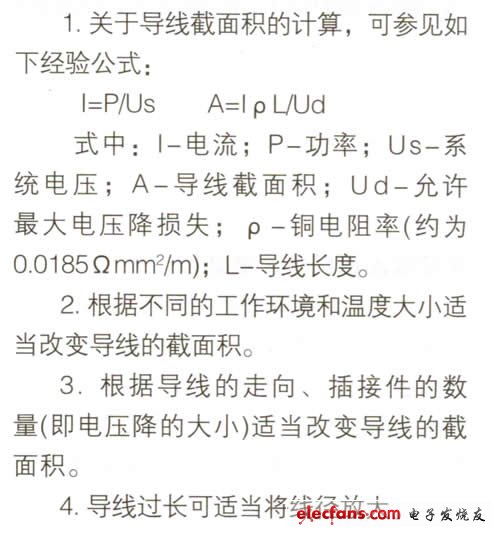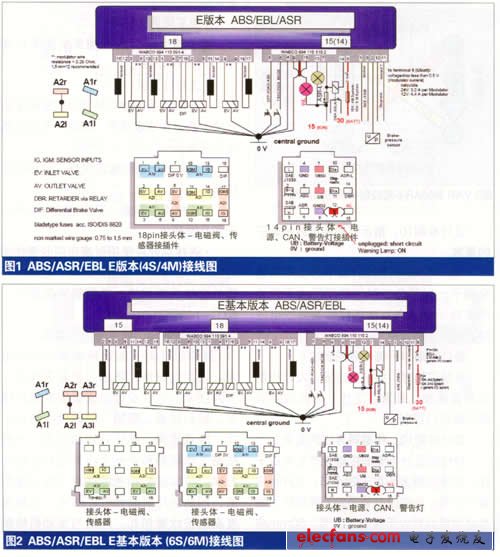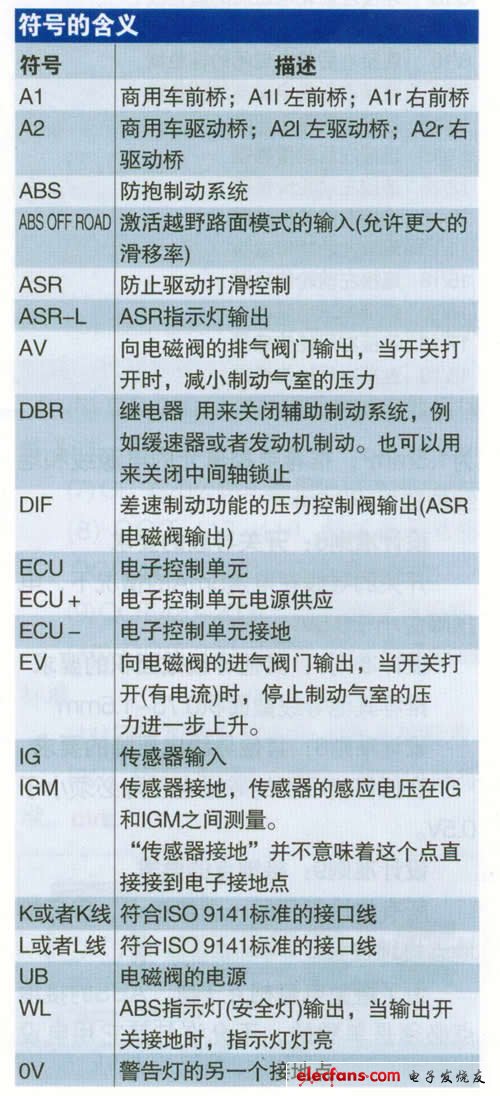This article mainly focuses on the matching design method of ABS wiring harness, from which the design guidelines that should be followed when designing ABS wiring harness are drawn for reference. When designing automotive wiring harnesses, the design principles should be based on the shortest wire, the least number of wires, the most suitable wire cross-section, and the selection of suitable connectors and terminals for correct and reliable connection, thereby improving the reliability of work. Selection principle of wire type 1. Choose according to the ambient temperature, for example: the ambient temperature around the engine is high, and there are many corrosive gases and liquids. Therefore, high-temperature, oil-resistant, vibration-resistant, and friction-resistant wires must be used; the wires on the luggage compartment lid must maintain their elasticity at low temperatures, so cold elastic wires must be selected to ensure their normal operation; the wires on the automatic transmission must be resistant High temperature and hydraulic oil resistance, its temperature stability is better; due to the high temperature of the automobile exhaust pipe, it should be kept away from the exhaust pipe as much as possible when arranging the wiring harness. For protection; the wires used for the brake shoe harnesses require wear resistance, impact resistance (sand) and high and low temperature (temperature cycling) impact resistance. 2. Shielded wires should be used for the main sensors, the sensors near the strong interference source and the weak signal sensors to prevent electromagnetic interference. 3. Determine the wire standard. The conductor structure, nominal cross-section, insulation material and thickness, performance requirements and maximum outer diameter of wires of different standards are somewhat different. At present, China has begun to use the automotive wire standards formulated by the following organizations: ISO, SAE, DIN, JIS, VW, PSA, etc., the types of wires commonly used in automobiles are Japanese standard (AVSS, etc.), national standard (QVR), German standard (FLRY) and other major series. Principle of calculation and selection of wire cross-sectional area The selection basis of the cross-sectional area of ​​the wire is mainly the voltage drop of the line, the ambient temperature change and the mechanical strength of the wire. The voltage drop of the line = the voltage drop caused by the wire resistance + the voltage drop of the switch contact + the pressure drop of the terminal + the contact voltage drop of the terminal + the internal resistance voltage drop of the power supply. Selection principle of wire color The choice of wire color is based on user requirements and error-proof design. Generally speaking, the grounding wire is black, etc., please refer to QC / T 414 "Color of Automotive Low-Voltage Wires", and consider the error-proof design, such as in the same connector of the wire harness Do not use the same color wires of the same specifications. Selection principle of connectors 1. Ensure the good contact of the connecting parts, make the contact resistance to the lowest, improve the reliability, and prefer to use the plug parts with double spring type compression structure. 2. Reasonably select the connector according to the cross-sectional area of ​​the wire and the size of the passing current. The currents that plugs of different specifications can carry are generally as follows: 1 series, around 10A; 2.2 or 3 series, around 20A; 4.8 series, around 30A; 6.3 series, around 45A; 7.8 or 9.5 series, around 60A. 3. Select the corresponding anti-vibration, waterproof, dust-proof and anti-pollution connector according to the specific working environment, such as the environment where the temperature and humidity in the engine compartment are too large and there are many corrosive gases and liquids, choose the waterproof connector . 4. If the same type of connector is used in the same wire harness, the color must be different, and the error-proof design should be carried out. 5. Based on the overall coordination of the appearance of the car, the color matching with the application environment should be preferred. 6. In order to reduce the type and quantity of connectors, prefer to use mixed type parts to make the assembly and fixing convenient. 7. For the terminal connector of the safety system with higher requirements, gold-plated parts should be preferred to ensure safety and reliability. According to the design principles of the relevant literature in the above review, the design guidelines for ABS harness design are summarized as follows: Design criterion 1: meet the wiring diagram connection requirements of system solutions with different functions (1) ABS / ASR / EBL E version (4S / 4M-S sensor; M solenoid valve)) wiring diagram is shown in Figure 1. ABS diagnostic socket installation instructions: installation location: Close to the electronic control unit or dashboard, easy to diagnose. The green and yellow wires of all solenoid valves are grounded. The brown line (EV) of the solenoid valve controls the intake port, and the blue line (AV) controls the exhaust port. The sensor wires are brown and black, but there is no polarity. Guangzhou Ehang Electronic Co., Ltd. , https://www.ehangmobile.com

